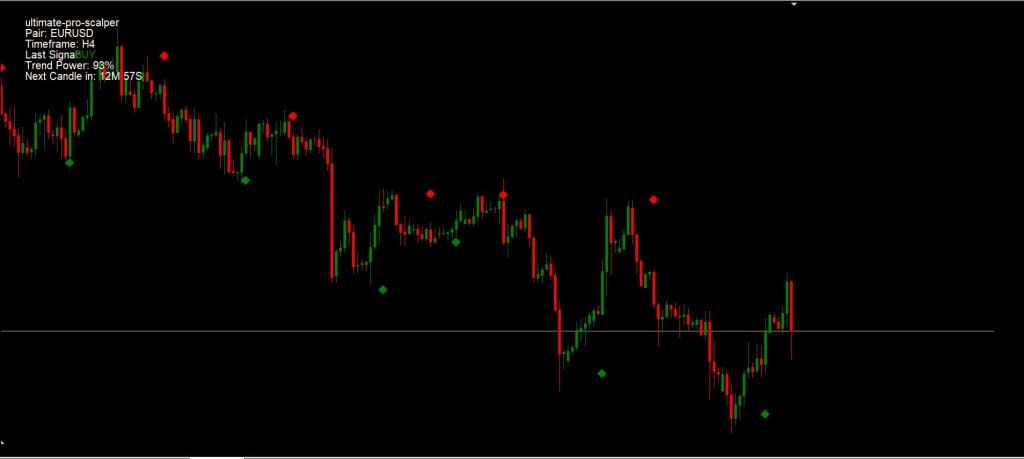Finding a Forex indicator thatis profitable is so hard. Thankfully, the Ultimate Pro Scalper Forex Indicator hits the sweet spot. Designed to cater to traders of all experience levels, this tool is easy to use and packed with features that deliver actionable insights. Whether you’re a scalper, day trader, or swing trader, this indicator can be a tool for identifying trends and their strength.
Why Choose the Ultimate Pro Scalper Indicator?
The Ultimate Pro Scalper is a trend-following indicator that provides Here’s buy and sell signals through green and red diamonds on the chart. But it doesn’t stop there—it also comes with a Trend Power info box, giving you real-time insights into the strength of the ongoing trend. This indicator good to enter trades at the right time and find the current trend.

Here’s why this Forex indicator is a favorite among forex traders:
- Clear Signals: Green diamonds signal a buying opportunity, while red diamonds indicate a sell.
- Trend Power Insights: This box shows whether the trend is strong enough to you, helping you avoid weak market conditions.
- Versatility: While ideal for scalping, it can also be adapted for day trading and swing trading strategies.
- User-Friendly Design: Perfect for both beginners and seasoned traders, thanks to its simplicity and effectiveness.
How to Trade with the Ultimate Pro Scalper Indicator
Trade Entry Strategy
Trading with the Ultimate Pro Scalper is straightforward:
- Look for the Diamonds:
- A green diamond signals a buy entry.
- A red diamond signals a sell entry.
- Check the Trend Power: Always glance at the Trend Power reading before entering a trade.
- High Trend Power: Confirms a strong trend—proceed with the trade.
- Low Trend Power Indicates weakness; waiting for stronger confirmation is better.
Pro Tip: Combine the signals with your existing strategy, like support and resistance levels, trendlines, or other indicators, to improve its accuracy.
Download a Collection of Indicators, Courses, and EA for FREE
Trade Exit Strategy
Exiting trades effectively is as important as entering them. Here’s how to do it with the Ultimate Pro Scalper:
- Signal-Based Exit:
- In a bullish trend, exit when a red diamond appears.
- In a bearish trend, exit when a green diamond appears.
- Trend Power Reduction:
- Watch for a drop in the Trend Power value. A signal that the trend might be losing power, allowing you to exit before it reverses.
- Alternative Exits:
- Exit when your risk-reward ratio is met.
- Use support and resistance zones to plan exits.
- Exit at trendlines if the price shows signs of indecision.
Pro Tip: Balancing between signal-based exits and other exit strategies can help avoid premature exits or staying in losing trades too long.
Who Should Use the Ultimate Pro Scalper?
This indicator is a fit for traders across the board.
- Scalpers will love its quick, clear signals for rapid trades.
- Day traders can use it to spot intraday trends and reversals.
- Swing traders can benefit from its trend strength analysis for holding positions over days.
Free Download Ultimate Pro Scalper MT4 Indicator
Read More FXMAX Scalping Indicator FREE Download
Final Thoughts
The Ultimate Pro Scalper Indicator is a well-rounded tool that combines simplicity and profitability. Its intuitive design makes it accessible for beginners, while its trend analysis capabilities ensure it adds value to seasoned traders’ arsenals. Offering clear buy and sell signals and a Tryou’rewer gauge helps traders navigate the forex market with confidence and precision.
Whether you’re looking to scalp the market for quick profits or capitalize on longer-term trends, thIt’sndicator covers you. Install it on your trading platform and experience the difference it makes in your decision-making process.






